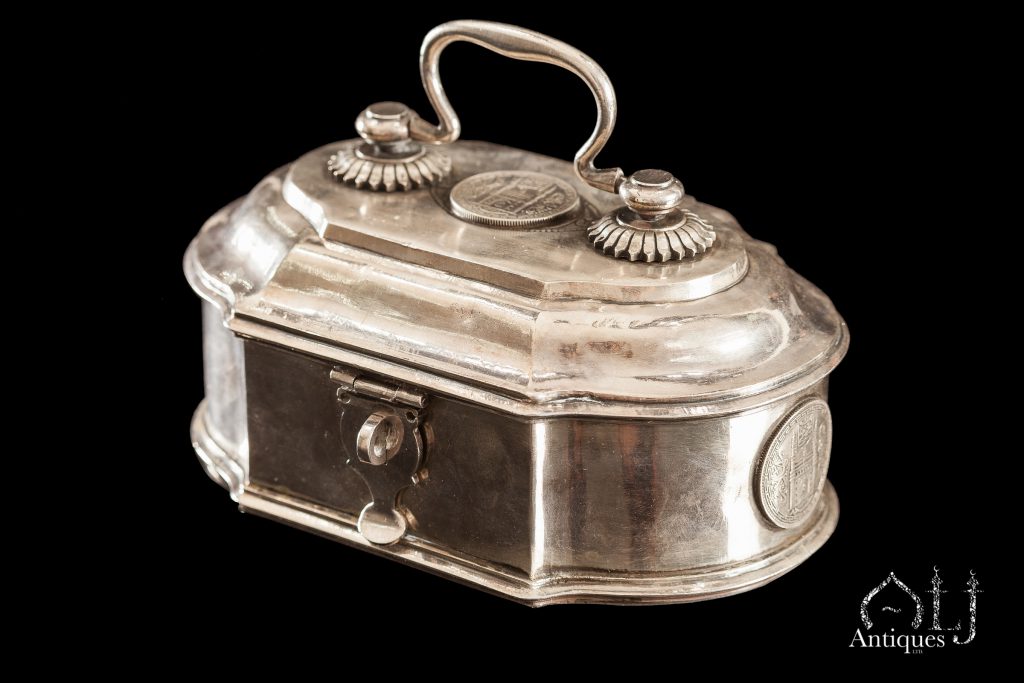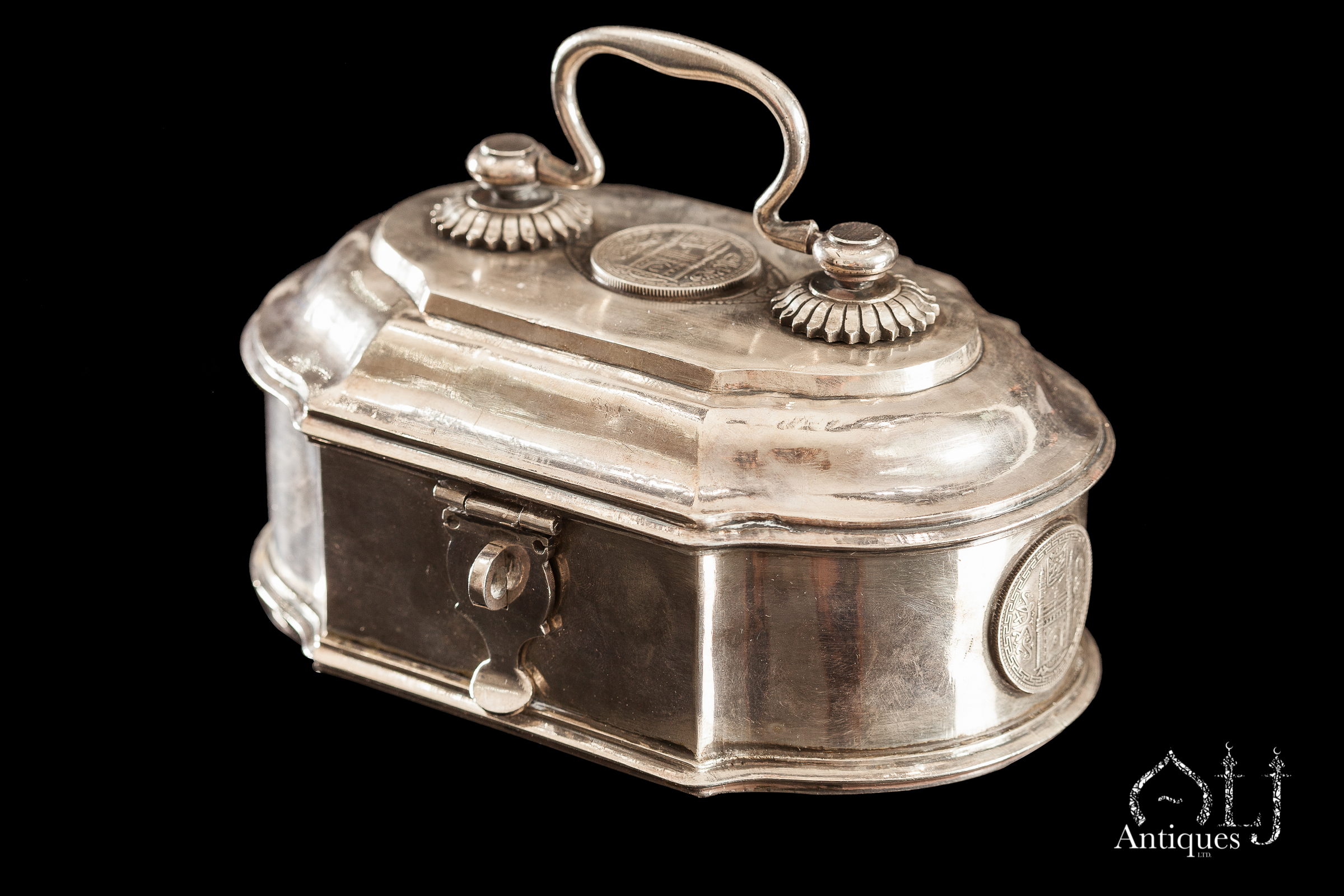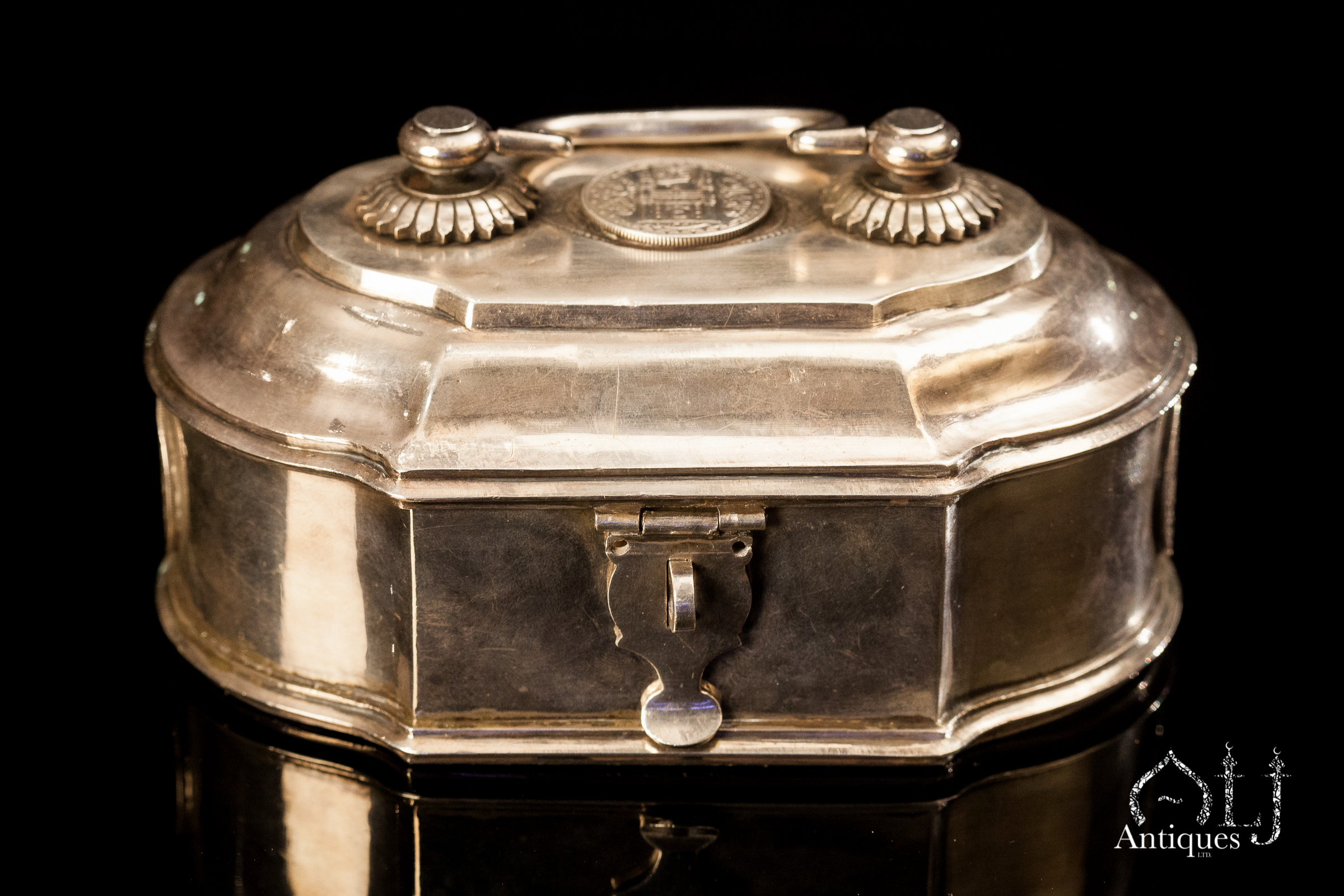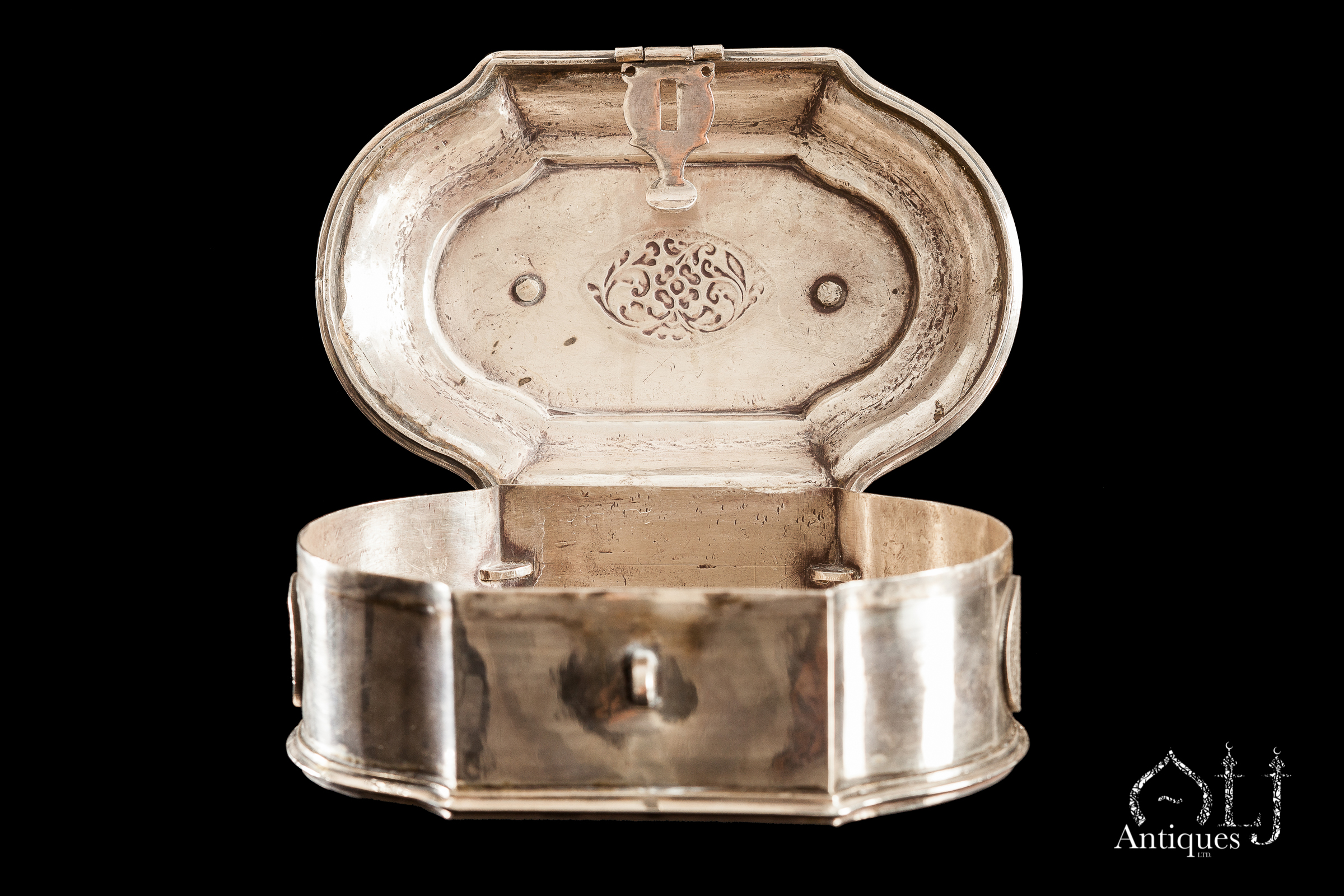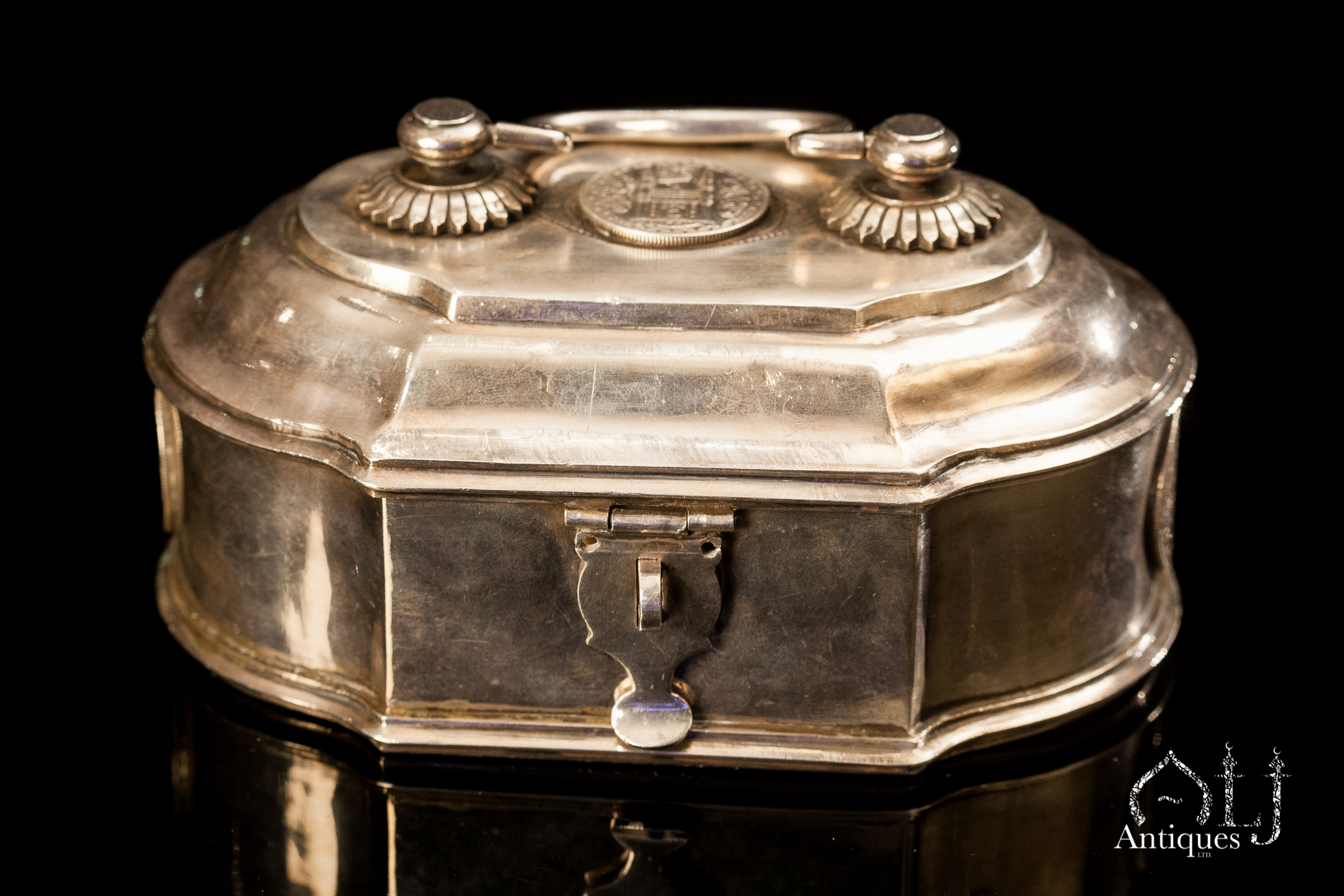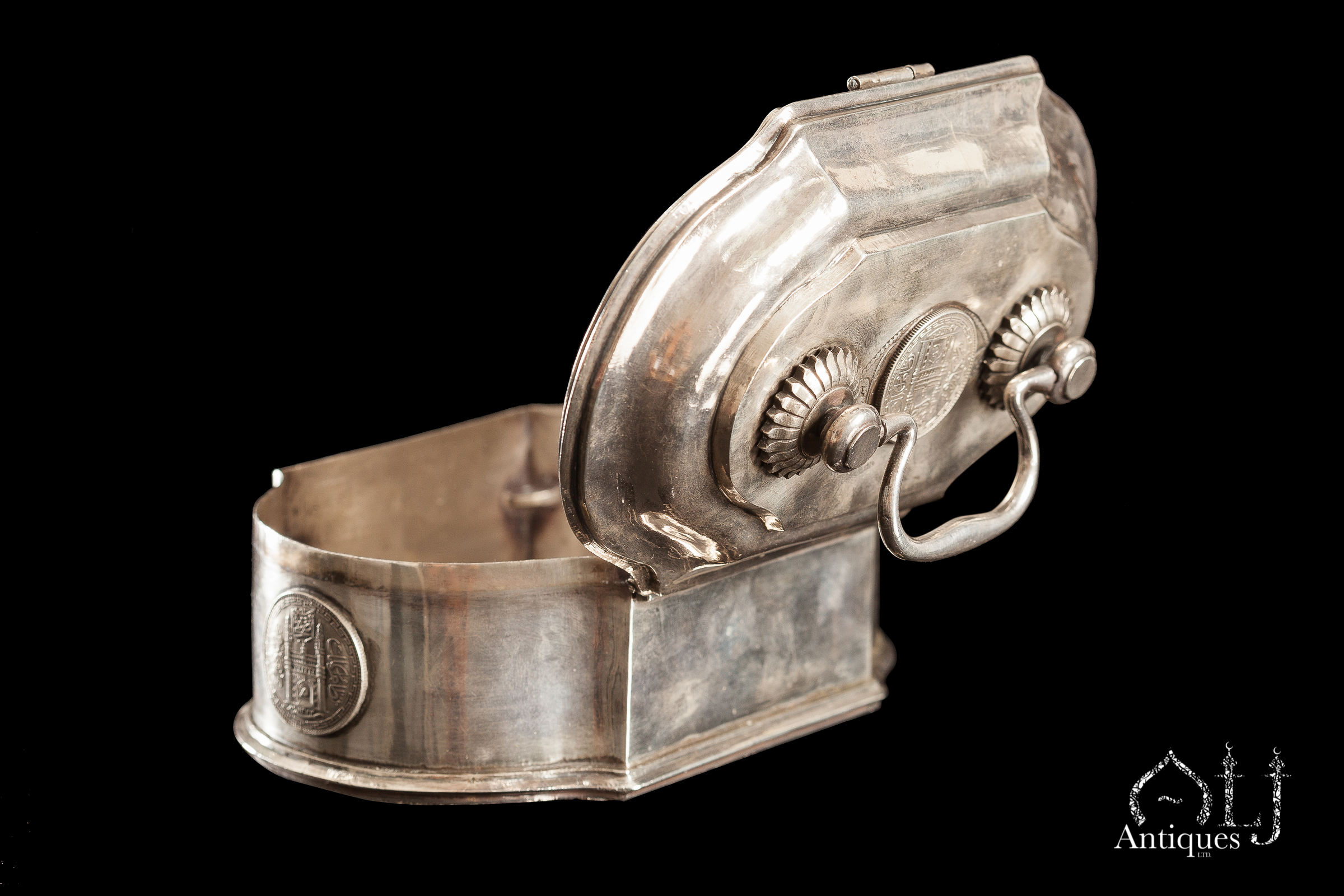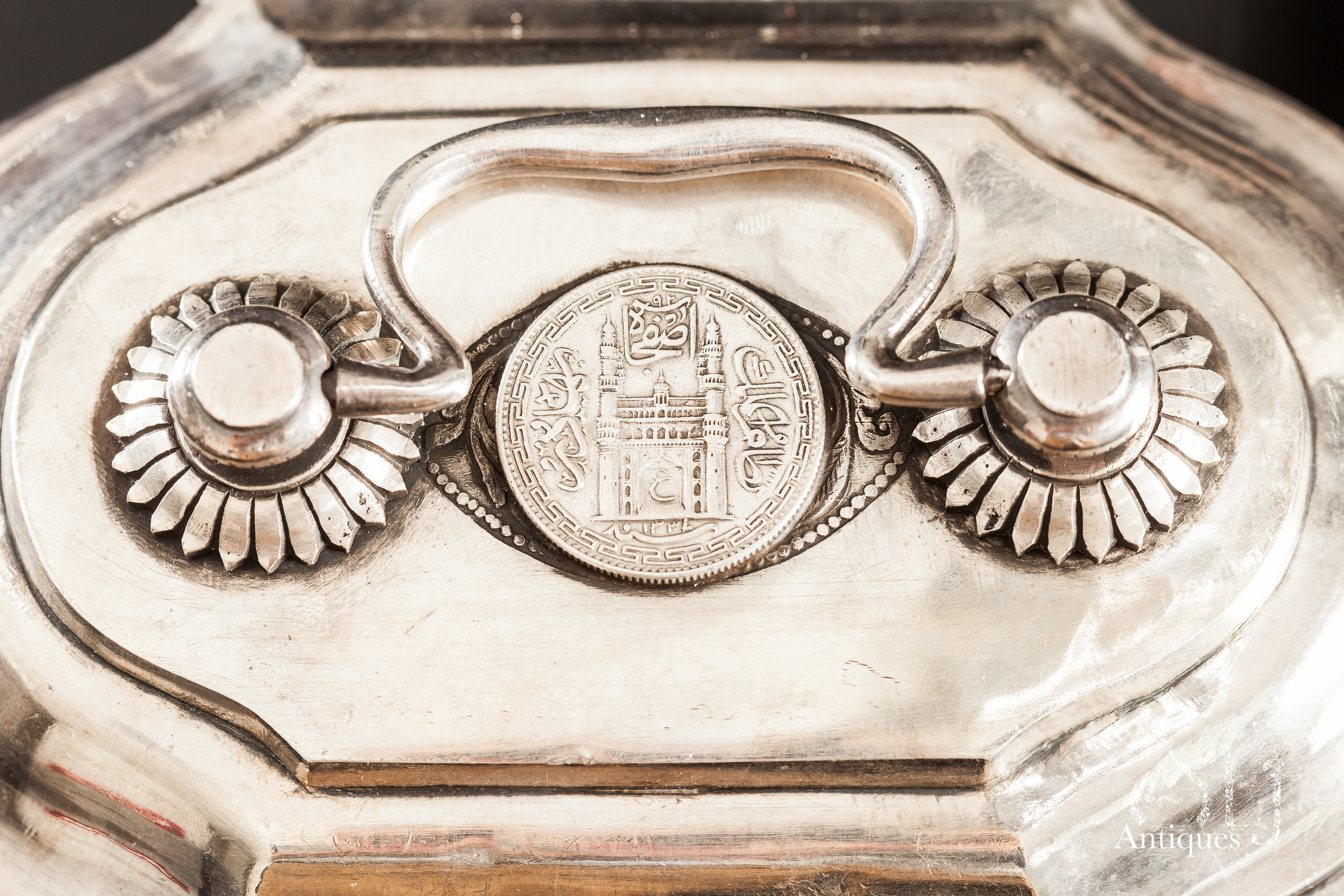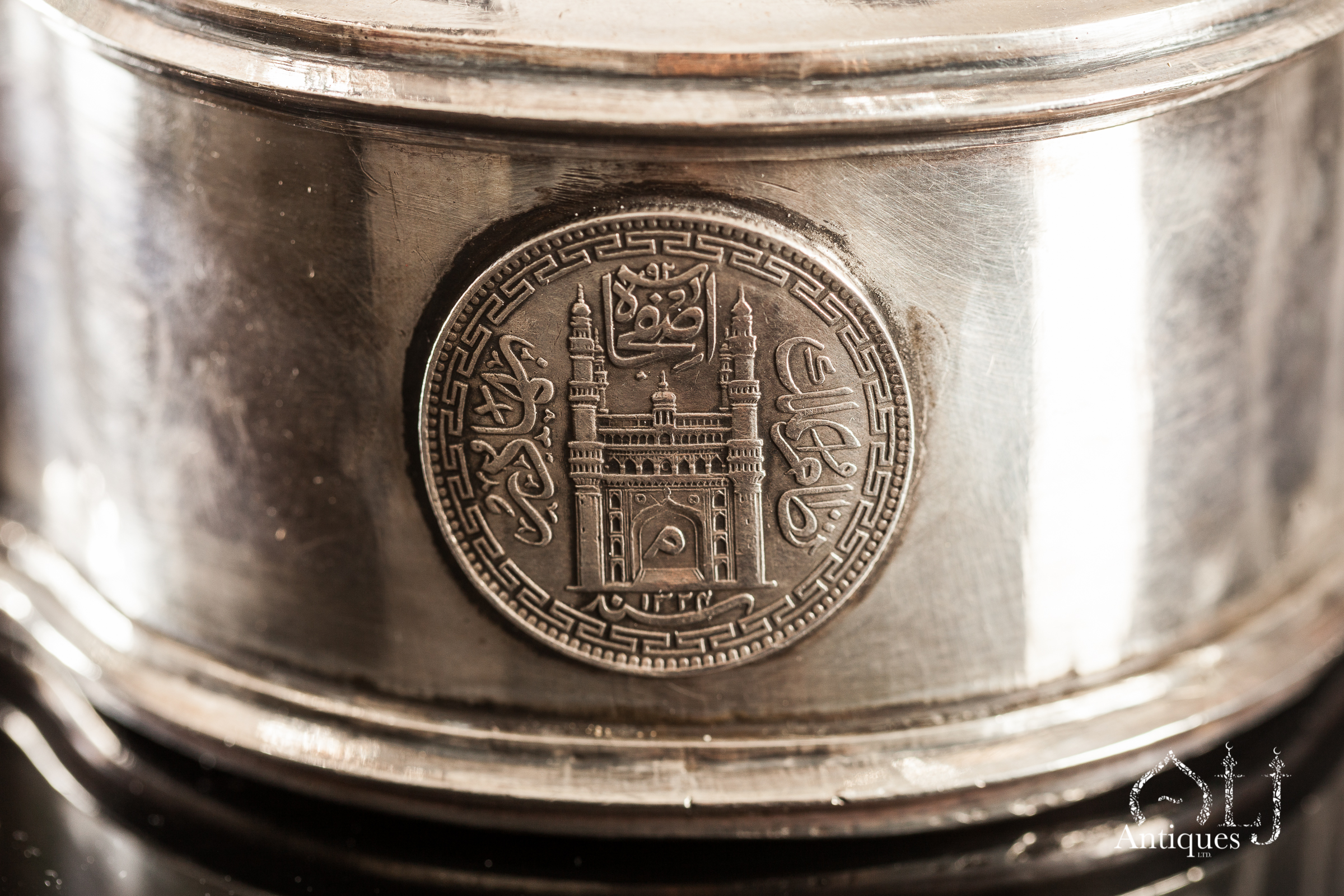Description
Small jewel caskets (zewar ka sanducqcha or sotavali peti) were made to store important jewels, jewellery and coins.
Other Storage boxes called (Dabbo) were also made of either precious or base metal in India.
During the eighteen-century plane or undecorated silver boxes fitted with a hasp, staple and a silver padlock with key were very popular in India and they were mainly used as storage or jewelry boxes to save small household valuables such as Jewels, jewellery and coins.
Our present lot was probably used to store coins and this might explain the additional and probably the later silver coins that were soldered on the box.
The additional coins (Rupees) are of late 19th early 20th century.
The Three Silver Rupees Soldered On The Box One On The Lid And The Other Two On Each Side, The Coins Were Struck By The Princely State Of The Nizams Of Hyderabad.
1- The one on top of the lid is dated 1331 AH. = 1912 AD., The Image on the coin of Charminar, with the Arabic letter (Ayn, the nearest is the English letter U) for the reign of Usman Ali Khan (1911-1948)AD., In 1937 Usman photo was printed on the cover of the Time Magazine and he was labeled as the richest man in the world.
2- The second coin on one sides of the box is dated 1324 AH. = 1908 AD., The Image on the coin of Charminar, with the Arabic letter (meem=M) for The reign of Mir Mahboob Ali Khan Siddiqi (1868-1911) AD.
3- The third coin on the other side is dated 1326AH. = 1908 AD., The Image on the coin of Charminar, with the Arabic letter (meem=M) for The reign of Mir Mahboob Ali Khan Siddiqi (1868-1911) AD.
What is the Charminar of Hyderabad: The Charminar is a magnificent and globally well-known iconic Indian architectural monument and structure that was built in 1591 AD.
Condition: Excellent, padlock and key are missing.
Three coins were probably added to the box on a latter date for the coin on the top covers the rather small repousse decorations on the lid.
Dimensions:
12 cm height (while holding up the box handle).
17 cm width.
11 cm depth.
References: For other eighteen-century plane or undecorated silver boxes or jewel boxes fitted with a hasp, staple and a silver padlock with key please see
Mughal Silver Magnificence (XVI-XIX th. Century), Antalga, 1987, ISBN 0 951 8523 1 0, for other examples please see lot Nos. 228, 223 & 217 exhibited on pages 154, 151 & 149.

